In the ever-evolving world of kitchen appliances, the demand for innovation and tailored solutions has surged. One key factor driving this transformation is the rise of Original Design Manufacturing (ODM) services. This article delves into the intricacies of ODM, its role in shaping market trends, and the crucial benefits it offers for those seeking to design and produce juicers. By exploring case studies and the challenges faced in this sector, we aim to provide a comprehensive understanding of how ODM can be a game-changer in the competitive landscape of kitchen appliances.
The Rise of ODM in the European and American Kitchen Appliance Market
The European and American kitchen appliance market has undergone a significant transformation, with one of the most notable trends being the rise of Original Design Manufacturing (ODM) services. This shift has been driven by several factors, creating a landscape where innovation and customization are paramount.
Once dominated by large, established brands with in-house design teams, the market is now seeing a surge in the number of manufacturers turning to ODM partners. These partnerships are fostering a more dynamic and competitive environment, where the focus is on rapid innovation and meeting the ever-evolving consumer demands.
One of the primary reasons for the rise of ODM in the kitchen appliance market is the need for speed-to-market. In a fast-paced consumer landscape, brands recognize that working with an ODM partner allows them to bring new products to market more quickly. ODM companies specialize in rapid prototyping and production, ensuring that brands can launch their products with minimal delay.
Additionally, the trend towards healthier living has spurred the demand for juicers and other health-focused kitchen appliances. With the rise of smoothies and juice bars, consumers are seeking high-quality, efficient appliances that can help them incorporate fresh fruits and vegetables into their diets. ODM companies are adept at designing and manufacturing these appliances to meet these specific needs.
Customization is another key factor. In the past, kitchen appliances were often one-size-fits-all. Today, consumers are looking for products that not only serve a functional purpose but also reflect their personal style and preferences. ODM services offer the flexibility to create custom designs that cater to niche markets and individual tastes, from sleek, modern aesthetics to rustic, vintage looks.
The cost-effectiveness of ODM is also a compelling factor. Many brands find that partnering with an ODM company can be more cost-efficient than maintaining an in-house design team. ODM providers often have extensive experience and expertise in various manufacturing processes, which can lead to cost savings through optimized production and supply chain management.
Innovation is at the heart of the ODM model. These companies are not just manufacturing appliances; they are also at the forefront of technological advancements. For example, ODM providers are continuously exploring new materials, such as eco-friendly plastics and sustainable metals, to reduce the environmental impact of kitchen appliances.
Moreover, the global nature of the kitchen appliance market means that ODM companies are well-positioned to cater to international demand. They can adapt their designs to comply with various safety standards and regulations across different regions, ensuring that products can be sold worldwide without complications.
Case studies of successful ODM partnerships in the kitchen appliance sector illustrate the benefits. For instance, a well-known juicer brand partnered with an ODM company to develop a compact, high-performance juicer that appealed to health-conscious consumers. The ODM team not only designed the juicer to be visually appealing and easy to use but also ensured that it met the stringent safety and performance requirements of the market.
As the market evolves, so do the challenges. Ensuring quality and maintaining a high standard of innovation in ODM projects is crucial. Brands must carefully select their ODM partners, evaluating their track record, capabilities, and alignment with their brand values.
Looking ahead, the future of the ODM kitchen appliance market looks promising. Predictions suggest that the demand for customized, health-focused appliances will continue to grow. This will necessitate even more sophisticated ODM services that can not only design and manufacture appliances but also provide ongoing support and updates as consumer preferences change.
In conclusion, the rise of ODM in the European and American kitchen appliance market is a testament to the industry’s adaptability and its responsiveness to consumer needs. By embracing ODM services, brands can stay ahead of the curve, offering innovative products that resonate with today’s discerning consumers.
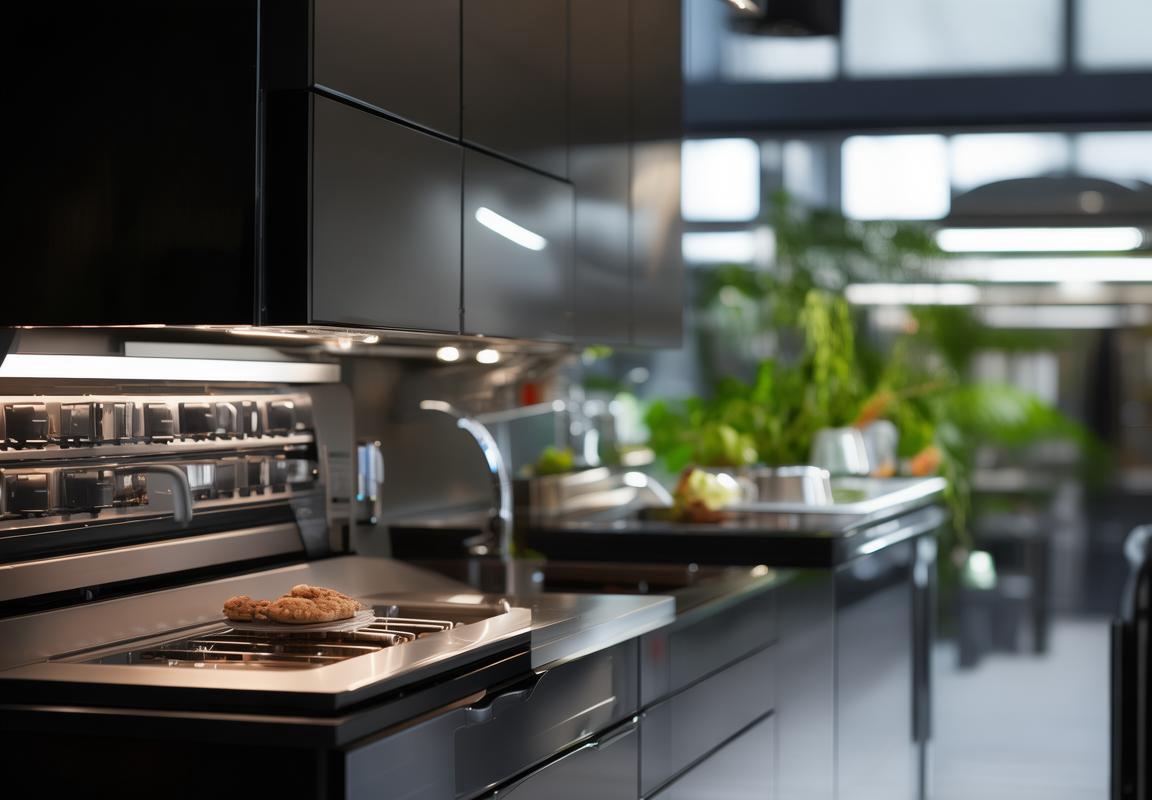
Understanding ODM: What It Means for Kitchen Appliance Design
ODM, or Original Design Manufacturing, has become a pivotal force in the kitchen appliance market, particularly in Europe and America. This collaborative approach allows manufacturers to leverage external design expertise without the need to establish their own in-house design teams. Let’s delve into what ODM means for kitchen appliance design and how it has reshaped the industry.
The Concept of ODM in Kitchen Appliance Design
At its core, ODM involves a manufacturer working closely with a design partner to create a product from scratch. This collaboration can range from the initial concept to the final production stages, ensuring that the design aligns with the manufacturer’s brand identity and market demands. In the kitchen appliance sector, this often means focusing on innovation, aesthetics, and user experience.
The Flexibility of ODM
One of the key advantages of ODM is the flexibility it offers. Design partners can adapt their concepts to cater to the latest trends, technological advancements, and consumer preferences. This agility allows kitchen appliance manufacturers to bring new and exciting products to market quickly, staying ahead of the competition.
Customization and Brand Differentiation
ODM services enable manufacturers to differentiate their brands by offering unique and customized products. Whether it’s a sleek, modern design for a juicer or an innovative cooking technology for an oven, the ability to tailor the design to specific brand values and target demographics is invaluable. This customization not only helps in brand building but also in creating a loyal customer base.
The Role of Innovation in ODM
Innovation is a cornerstone of ODM in kitchen appliance design. Design partners often bring a fresh perspective and cutting-edge ideas to the table, pushing the boundaries of what’s possible. This can lead to the creation of appliances that not only look great but also perform exceptionally well, often with features that were previously unavailable or underdeveloped.
Quality Control and Manufacturing Efficiency
When it comes to ODM, quality control is paramount. Design partners are typically responsible for ensuring that the design is feasible from a manufacturing standpoint, which means considering factors like material sourcing, production processes, and cost-effectiveness. This attention to detail often results in more efficient manufacturing processes and higher-quality end products.
Collaboration Across Cultures and Markets
ODM partnerships often span different countries and cultures, bringing diverse perspectives and insights to the design process. This cross-cultural collaboration can be particularly beneficial for kitchen appliance manufacturers looking to enter new markets or appeal to a broader international audience.
Intellectual Property and Design Rights
An important aspect of ODM is the management of intellectual property. Design partners usually retain the rights to their original work, while manufacturers gain exclusive rights to produce and sell the final product. This arrangement ensures that both parties protect their investments and maintain control over their designs.
Cost-Effective Solutions
Contrary to the misconception that ODM is an expensive process, it can often be a cost-effective solution. By not having to invest in full-time design staff or expensive design software, manufacturers can save on overhead costs. Additionally, the streamlined design and production process can reduce time-to-market and production costs.
Sustainability and Eco-Friendly Designs
With increasing consumer awareness of environmental issues, ODM has also become a platform for promoting sustainability in kitchen appliance design. Design partners can incorporate eco-friendly materials and energy-efficient technologies into the design, appealing to environmentally conscious consumers.
The Future of ODM in Kitchen Appliance Design
As the kitchen appliance market continues to evolve, ODM is likely to play an even more significant role. The ability to adapt to new trends, incorporate advanced technologies, and create products that resonate with consumers will be crucial for manufacturers looking to succeed in this dynamic industry.
In conclusion, ODM in kitchen appliance design is a dynamic and versatile approach that offers numerous benefits. From customization and innovation to cost-effectiveness and sustainability, ODM is shaping the future of kitchen appliances, ensuring that they remain both functional and appealing to consumers worldwide.
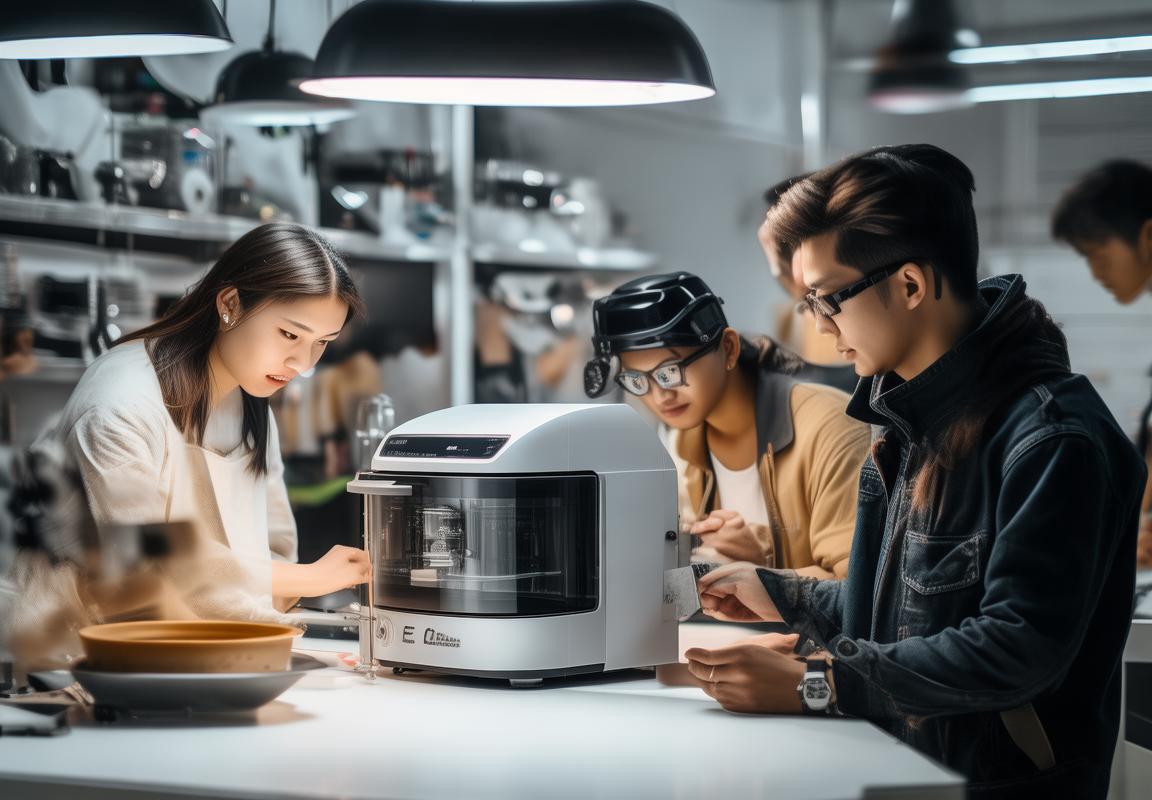
The Role of ODM Juicer Design Service in Market Trends
In the ever-evolving landscape of kitchen appliance design, Original Design Manufacturing (ODM) has emerged as a pivotal player, particularly in the realm of juicers. ODM services have become integral to shaping market trends, offering a unique blend of innovation, customization, and efficiency that appeals to both manufacturers and consumers alike.
The ODM approach allows manufacturers to tap into a wealth of design expertise without the need to invest heavily in their own in-house design teams. This collaboration often leads to the creation of products that stand out in a crowded market, as each design is tailored to meet specific customer needs and preferences. Here’s how ODM juicer design services are influencing market trends:
-
Tailored Solutions for Diverse Markets: The role of ODM in juicer design is to provide solutions that resonate with the unique demands of different markets. For instance, in Europe, there’s a growing trend towards eco-friendly and energy-efficient appliances. ODM services are responding by designing juicers that are not only stylish but also sustainable, appealing to environmentally conscious consumers.
-
Innovation Through Collaboration: ODM partners often bring a fresh perspective to the table, fostering innovation in juicer design. By working closely with manufacturers, they can introduce new features, materials, and technologies that were previously unexplored. This collaborative approach has led to the development of juicers that are not just functional but also technologically advanced, with features like touch screen interfaces, smart connectivity, and automated cleaning functions.
-
Market Responsiveness: The dynamic nature of the market requires quick adaptability, and ODM juicer design services excel in this area. They can rapidly respond to emerging trends, such as the rise of health and wellness, by creating juicers that cater to the demand for fresh, homemade juices. This agility ensures that manufacturers stay ahead of the curve, offering products that are in sync with current consumer interests.
-
Customization for Brand Identity: Each brand has its unique identity, and ODM juicer design services play a crucial role in reinforcing this identity through product design. By incorporating brand elements such as color schemes, logos, and distinctive shapes, ODM ensures that the juicer not only performs well but also aligns with the brand’s image and values. This cohesive branding enhances customer recognition and loyalty.
-
Cost-Effective Design and Production: One of the key advantages of ODM is its cost-effectiveness. By handling the design and prototyping process, ODM partners can optimize the production process, leading to reduced costs for the manufacturer. This cost savings can be passed on to the consumer, making high-quality juicers more accessible. The result is a competitive edge in the market, as brands offer value-driven products without compromising on design or functionality.
-
Focus on Quality and Safety: As consumer awareness of product safety and quality increases, ODM juicer design services prioritize these aspects in their designs. From selecting durable materials to ensuring compliance with safety standards, the focus is on creating a product that not only looks good but also performs reliably and safely. This commitment to quality can significantly impact market trends, as consumers seek out brands that prioritize their well-being.
-
Global Expansion: For manufacturers looking to expand into new markets, ODM juicer design services are invaluable. They can adapt the design to meet the cultural and regulatory requirements of different regions, making it easier for brands to enter new territories. This global perspective ensures that juicers are designed with a diverse audience in mind, allowing for successful market penetration.
-
Sustainability and Innovation: ODM services are also at the forefront of integrating sustainability into juicer design. By exploring materials and manufacturing processes that are environmentally friendly, they are helping to set new standards in the industry. This focus on sustainability not only appeals to eco-conscious consumers but also positions brands as leaders in responsible product development.
In summary, the role of ODM juicer design services in market trends is multifaceted. They drive innovation, offer tailored solutions, ensure cost-effectiveness, and prioritize quality and safety. As the market continues to evolve, ODM’s influence in shaping the future of juicer design is undeniable, providing a pathway for manufacturers to stay competitive and meet the ever-changing demands of consumers.
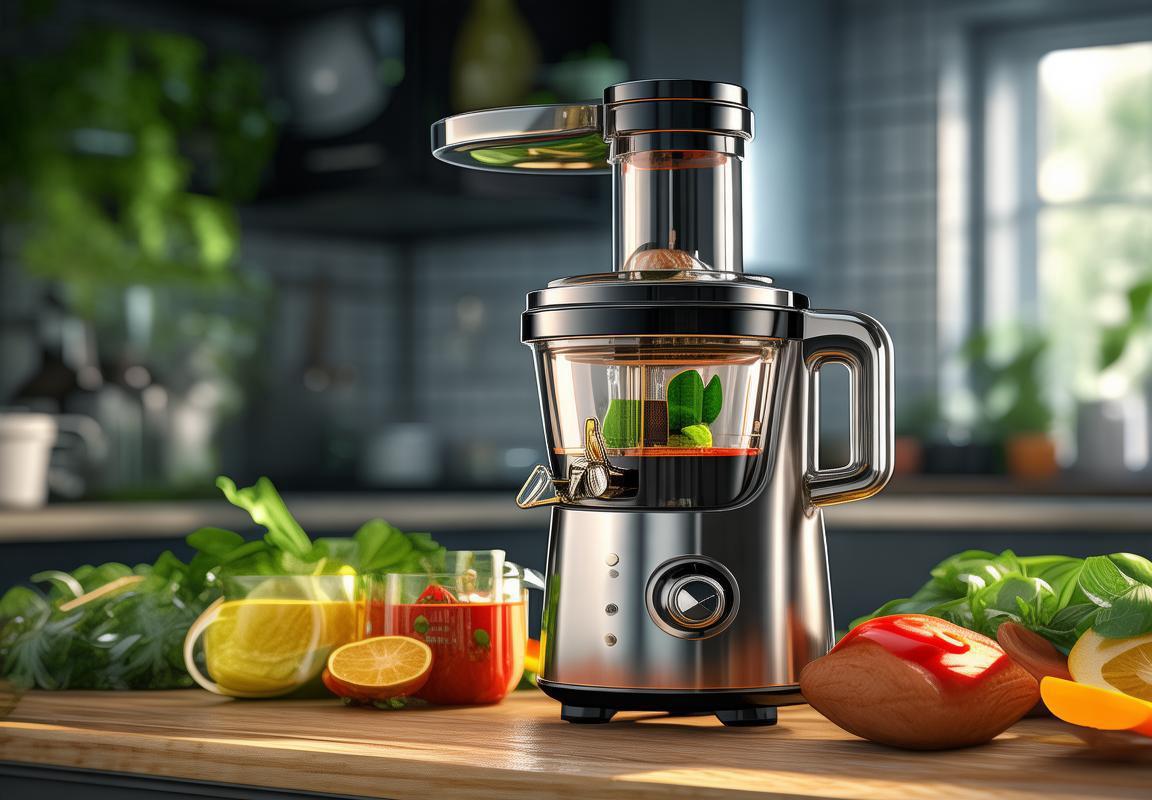
Key Benefits of Choosing ODM for Your Juicer Needs
In the ever-evolving world of kitchen appliances, the choice to opt for Original Design Manufacturer (ODM) services for juicers can bring a multitude of advantages. Here’s a closer look at some of the key benefits:
The Customization EdgeOne of the standout benefits of choosing ODM for your juicer needs is the level of customization it offers. ODM services allow you to tailor the design and functionality of the juicer to meet the specific requirements of your target market. This can include everything from the size and shape of the juicer to the materials used and the inclusion of unique features that set your product apart from competitors.
Cost-Effective SolutionsContrary to the belief that custom solutions are more expensive, ODM can often provide cost-effective solutions. By leveraging the expertise of the ODM provider, you can avoid the high costs associated with setting up an in-house design team or purchasing specialized equipment. ODM companies typically have streamlined processes and economies of scale that can reduce production costs without compromising on quality.
Quick Turnaround TimesTime is of the essence in the fast-paced kitchen appliance market. ODM services can offer a significant advantage in terms of quick turnaround times. These companies specialize in efficient production and can expedite the design and manufacturing process, ensuring that your juicer is ready to hit the shelves sooner rather than later.
Innovation at Your FingertipsWhen you choose an ODM for your juicer design, you gain access to a team of professionals who are at the forefront of innovation. These experts can bring fresh ideas and cutting-edge technologies to your product, helping you stay ahead of the curve in a highly competitive market. From advanced juicing mechanisms to energy-efficient designs, ODM can help push the boundaries of what’s possible.
Quality Control and AssuranceA crucial aspect of any juicer is its quality. ODM companies often have stringent quality control measures in place to ensure that the products they deliver meet the highest standards. This can include rigorous testing of materials, components, and final products, as well as adherence to international safety standards. By relying on ODM, you can be confident that your juicer will not only perform well but also be safe for consumers.
Flexibility in Market ExpansionAs your brand grows, so does the need to expand into new markets. ODM services offer the flexibility to adapt your juicer design to meet the cultural, regulatory, and consumer preferences of different markets. Whether it’s adjusting the power output for different voltage standards or incorporating features that resonate with local consumers, ODM can help you navigate these complexities.
Long-Term PartnershipsChoosing an ODM for your juicer needs can lead to long-term partnerships that benefit both parties. ODM companies often work closely with their clients to understand their vision and long-term goals. This collaborative approach can lead to a deeper understanding of your brand and the ability to provide ongoing support and enhancements to your product line.
ScalabilityAs your business scales up, so too does the demand for more units of your juicer. ODM companies are well-equipped to handle large-scale production runs. This scalability ensures that you can meet market demands without compromising on the quality of your product.
Expertise in Sourcing and MaterialsA significant advantage of working with an ODM is their expertise in sourcing high-quality materials and components. They have established relationships with suppliers and can ensure that your juicer is made with the best available materials, enhancing its durability and performance.
Market Trends and Consumer InsightsODM companies often have a pulse on the latest market trends and consumer insights. They can provide valuable feedback on what features are most sought after and how your juicer can be positioned to appeal to the current and future consumer landscape.
By choosing ODM for your juicer needs, you’re not just selecting a manufacturer; you’re investing in a strategic partner that can help you innovate, scale, and succeed in a dynamic industry.

Case Studies: Successful ODM Projects in the Kitchen Appliance Sector
In the competitive kitchen appliance sector, Original Design Manufacturing (ODM) has emerged as a pivotal strategy for brands looking to stand out in the market. Let’s delve into some case studies that showcase successful ODM projects within this industry.
The story of Brand A’s sleek and eco-friendly blender began with a request for an ODM design service. The company aimed to tap into the growing health-conscious consumer base by offering a product that not only performed exceptionally but also aligned with sustainable living trends. The ODM partner, with its deep understanding of market needs and design aesthetics, crafted a blender that combined modern aesthetics with energy-efficient technology. The result was a product that resonated with consumers, leading to a significant increase in sales and brand recognition.
Brand B faced a challenge in the market: their juicers were well-received, but customers were looking for more than just a functional appliance. They sought a juicer that could be a centerpiece in their kitchen, a statement piece that reflected their personal style. The ODM design service was called upon to create a line of juicers that were as visually appealing as they were functional. The design team worked closely with Brand B’s in-house team to develop a range of juicers with innovative designs, including sleek lines, vibrant colors, and even customizable parts. This unique approach to design transformed the juicer from a mere appliance into a cherished kitchen accessory.
Another success story comes from Brand C, which struggled to keep up with the rapid pace of technological advancements in the kitchen appliance market. The brand knew they needed a fresh perspective to rejuvenate their product line. An ODM project was initiated to integrate cutting-edge features into their existing juicer models. The ODM partner, with a focus on innovation, introduced smart technology that allowed users to track their nutritional intake, program personalized juicing routines, and even sync with health apps. This integration not only enhanced the juicer’s functionality but also positioned Brand C as a leader in smart kitchen appliances.
In the world of high-end kitchen appliances, Brand D faced the challenge of creating a juicer that would appeal to luxury consumers. The brand sought an ODM partner that could translate their brand values into a premium product. The ODM design service delivered a juicer that was not just a tool but an object of desire. The design featured premium materials, intricate detailing, and a sleek, minimalist form factor that whispered luxury. The juicer became a symbol of exclusivity, driving sales and reinforcing Brand D’s status as a top-tier appliance manufacturer.
For Brand E, the key to market success lay in differentiation. Their existing juicers were well-built but lacked a unique selling proposition. An ODM project was launched to create a line of juicers that would set them apart from the competition. The ODM partner focused on creating a range of juicers with innovative features, such as a compact design that saved counter space, a quiet motor that ensured a peaceful kitchen environment, and a user-friendly interface that made juicing a breeze. The result was a product that appealed to consumers seeking both functionality and convenience, propelling Brand E to new heights in the market.
Brand F’s ODM project focused on the niche market of health enthusiasts who were looking for high-quality, organic produce juicers. The ODM design service developed a juicer that was not only durable and efficient but also designed with organic materials and sustainable practices in mind. The juicer became a symbol of health and eco-consciousness, attracting a loyal customer base that valued both performance and environmental responsibility.
These case studies highlight the transformative power of ODM in the kitchen appliance sector. By leveraging the expertise of external design teams, brands have been able to innovate, differentiate, and cater to evolving consumer needs. Whether it’s through sleek aesthetics, smart technology, or sustainable design, ODM has proven to be a valuable tool for companies aiming to stay ahead in a dynamic and competitive market.
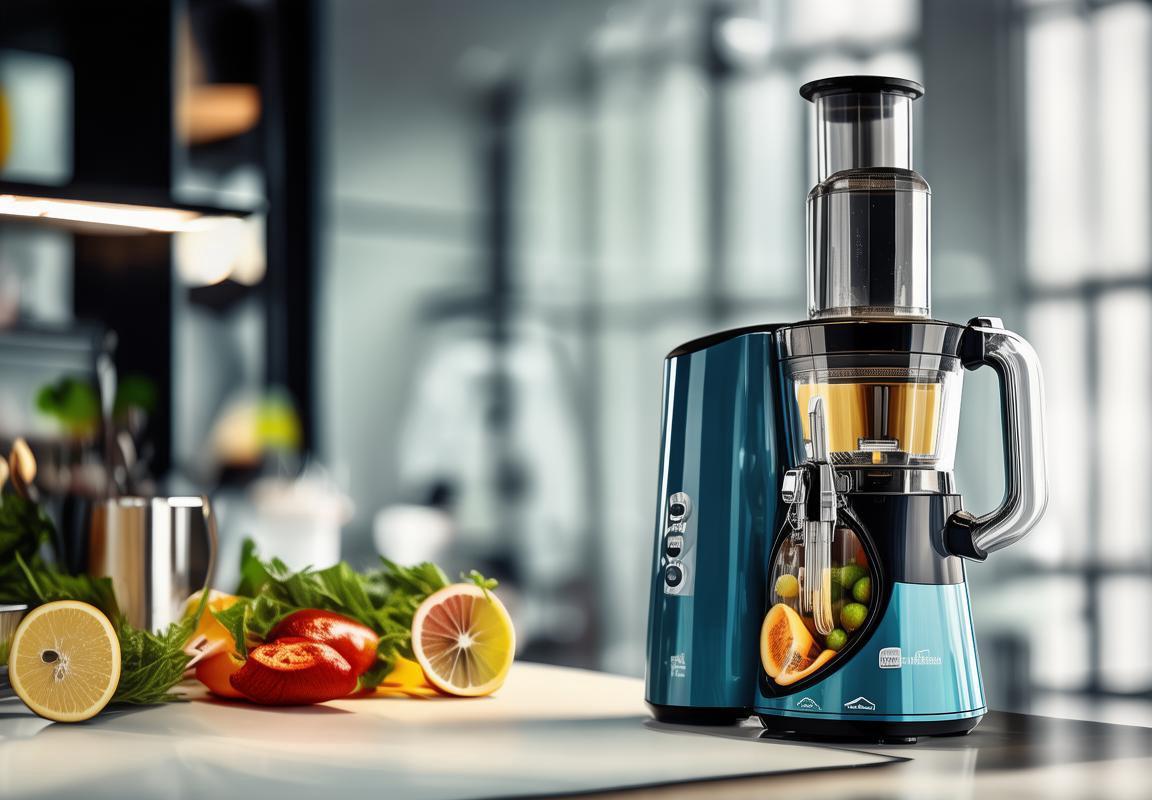
Navigating the Challenges: Ensuring Quality and Innovation in ODM Juicer Design
In the dynamic world of juicer design, navigating the challenges of maintaining quality and fostering innovation is crucial for ODM (Original Design Manufacturer) companies. Balancing market demands with cutting-edge technology and meticulous attention to detail is a delicate dance. Let’s delve into the intricacies of this process.
The demand for personalized and high-quality juicers has surged, and with it, the pressure to deliver unique designs that stand out. Ensuring that these designs not only meet but exceed customer expectations is a multifaceted task. One must consider material selection, functionality, user experience, and the environmental impact. For instance, a juicer’s blade design must be sharp enough to efficiently extract juice without jamming, yet it must also be durable and easy to clean.
Moreover, the aesthetic appeal of a juicer plays a significant role in its market success. A sleek, modern design can attract a broader consumer base, especially in a market as competitive as the kitchen appliance sector. ODM companies often work closely with their clients to translate their brand identity into a physical product that resonates with the target demographic.
The complexity of ODM projects is further compounded by the need to comply with various regulatory standards. Different regions have different safety and quality regulations, which can range from certifications for electrical appliances to guidelines for materials used in manufacturing. Ensuring that every ODM juicer design adheres to these standards without compromising on innovation is a challenge that requires a team of experts well-versed in both design and compliance.
Another challenge is the integration of new technologies. ODM juicer design services must stay abreast of the latest technological advancements, such as intelligent features that can monitor and adjust the juicing process for optimal performance. This not only requires a deep understanding of mechanical engineering but also an eye for user interface design that makes these technologies intuitive and accessible.
Innovation also means pushing the boundaries of what’s possible, often requiring ODM companies to experiment with new materials and construction techniques. For example, a company might develop a juicer with a lightweight, yet highly durable, exterior made from recycled materials, not only appealing to environmentally conscious consumers but also setting a new trend in the market.
The iterative process of design, testing, and refinement is essential. ODM companies must conduct rigorous testing to ensure that their juicers are not only aesthetically pleasing but also reliable and efficient. This includes stress tests, user interface trials, and real-world usage simulations. Feedback from these tests is crucial in refining the design and making improvements that can lead to a more successful product.
Collaboration with industry experts is also key. ODM designers often work alongside chefs, nutritionists, and even ergonomic specialists to create juicers that not only perform well but also enhance the overall kitchen experience. These collaborations can lead to innovative features that might not have been considered otherwise, such as built-in storage solutions or adjustable juice output settings.
Despite the challenges, the rewards of successful ODM juicer design are substantial. A well-designed juicer can become a flagship product for a brand, driving sales and customer loyalty. Case studies of successful ODM projects in the kitchen appliance sector often highlight the triumph of overcoming obstacles to create a product that not only meets but also anticipates market needs.
In conclusion, ensuring quality and innovation in ODM juicer design is a journey filled with challenges but rich with opportunities. It requires a combination of creative problem-solving, technical expertise, and a deep understanding of consumer preferences and market trends. As the industry continues to evolve, so too will the strategies employed by ODM companies to stay ahead of the curve.
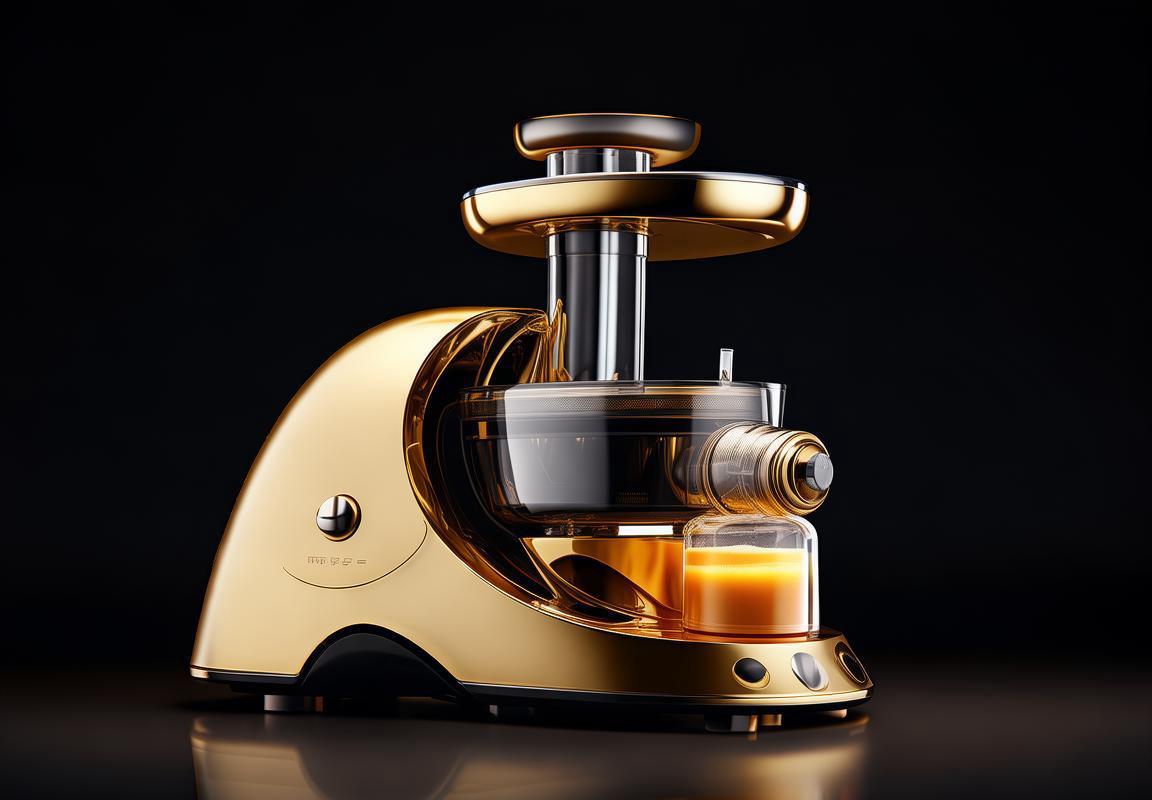
Future Outlook: Predictions for the ODM Juicer Design Service Market
In the ever-evolving landscape of the juicer market, the role of Original Design Manufacturing (ODM) services has become increasingly significant. As consumer demands shift and technology advances, understanding the future outlook for the ODM juicer design service market is crucial for both manufacturers and consumers alike. Here’s a glimpse into the predictions shaping this dynamic sector.
The integration of smart technology continues to be a driving force in the juicer industry. With the rise of health-conscious consumers, there’s an expectation for juicers to not only extract the best from fruits and vegetables but also to offer additional functionalities such as Bluetooth connectivity, nutritional tracking, and even automated cleaning cycles. ODM juicer design services are at the forefront of these innovations, predicting a surge in demand for smart juicers that can cater to the modern lifestyle.
Customization is another trend that’s set to grow. Consumers are looking for products that reflect their personal style and needs, and ODM allows manufacturers to create juicers that can be tailored to specific market segments. From sleek, minimalist designs for urban professionals to vibrant, eco-friendly models for environmentally conscious buyers, the ODM market is expected to see a diversification in product offerings that cater to these niche markets.
Sustainability is a non-negotiable factor in today’s market. ODM juicer design services are predicting a shift towards sustainable materials and manufacturing processes. This means juicers that are not only functional but also environmentally friendly, with an emphasis on recyclable components and energy-efficient designs. As consumers become more environmentally aware, the market for sustainable juicers designed through ODM is poised to expand significantly.
The globalization of the juicer market is also a factor that ODM services are closely monitoring. As brands look to expand their reach, they often turn to ODM for help in navigating different cultural preferences and regulatory requirements. This trend suggests that the ODM market will see a rise in international collaborations, with design services becoming more adept at understanding and adapting to diverse consumer bases worldwide.
Innovation in juicer design is not just about aesthetics or technology; it’s also about efficiency and ease of use. ODM services are forecasting a trend towards juicers that are not only stylish but also intuitive to operate. This could include features like one-touch operation, quiet motors, and compact designs that make juicing a more pleasant and efficient experience. As consumers seek out convenience in their kitchen appliances, the market for user-friendly juicers is expected to flourish.
Another key prediction is the integration of health and wellness into juicer design. With the rise of functional foods and beverages, ODM juicer design services are anticipating a surge in juicers that can handle a wider variety of ingredients, including grains, nuts, and seeds, to create a broader range of health-boosting drinks. This could lead to the development of multi-function juicers that can perform tasks beyond traditional juicing, such as blending or even grinding.
The cost of technology is also a consideration in the future outlook for the ODM juicer design service market. As technology becomes more accessible, we can expect to see a wider range of juicers at different price points. This means that while high-end, premium juicers will continue to command a premium, there will also be an increase in budget-friendly options that cater to price-sensitive consumers without compromising on quality.
Lastly, the role of data analytics in juicer design cannot be overstated. ODM services are leveraging data to inform design decisions, ensuring that juicers are not only attractive and functional but also based on consumer usage patterns and preferences. This data-driven approach is expected to become more prevalent, with ODM firms using insights to predict future trends and design juicers that will resonate with consumers.
In conclusion, the ODM juicer design service market is expected to see a myriad of developments in the coming years, driven by consumer demand for smart, sustainable, and user-friendly appliances. As technology advances and market trends evolve, ODM will play a pivotal role in shaping the future of juicer design.
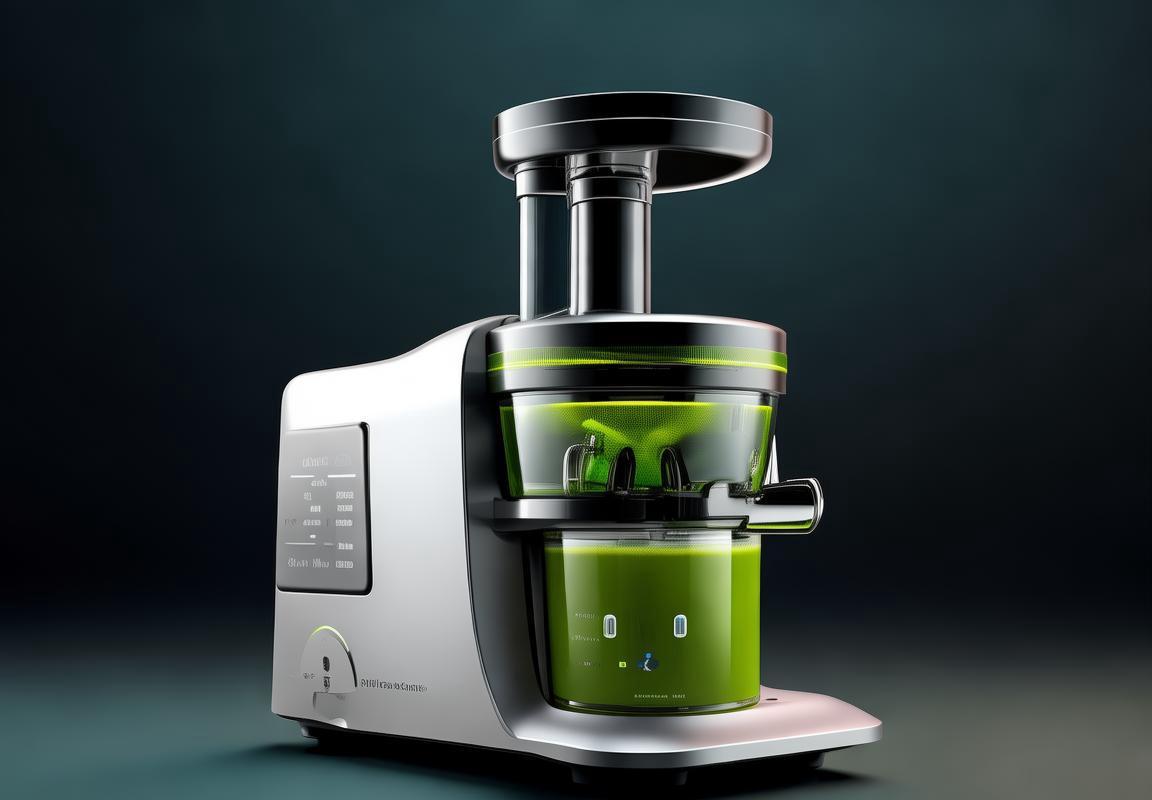
How to Select the Right ODM Partner for Your Juicer Design Needs
Understanding the nuances of the market, it’s crucial to recognize that the right ODM partner for your juicer design needs can make a significant difference in the final product’s success. Here’s how to sift through the options and make an informed decision:
-
Define Your Vision ClearlyBefore you start looking for an ODM partner, have a clear vision of what you want your juicer to be. This includes not only the aesthetics but also the functionality, target market, and any unique features that set it apart from competitors. A partner who shares your vision will be more invested in creating a product that truly resonates with your customers.
-
Research and Evaluate Potential PartnersConduct thorough research to identify ODM companies that specialize in juicer design. Look into their portfolio, case studies, and testimonials from previous clients. Evaluate their expertise, experience, and the range of services they offer. It’s also beneficial to check if they have a history of working with brands similar to yours.
-
Consider Their Design CapabilitiesA key aspect of selecting the right ODM partner is their design capabilities. Look for a company that not only understands the latest design trends but also has the technical expertise to bring those trends to life. They should be able to offer innovative solutions and be willing to iterate on designs to ensure they meet your specifications and market demands.
-
Quality Control and Manufacturing ExcellenceThe quality of the juicer is paramount. Ensure that your ODM partner has stringent quality control measures in place. They should be able to demonstrate their commitment to quality through certifications, audits, and a track record of producing high-quality products. Additionally, consider their manufacturing capabilities, including the ability to scale production as your business grows.
-
Communication and CollaborationEffective communication is the backbone of any successful partnership. Choose an ODM partner that values open and transparent communication. They should be responsive to your needs, adaptable to changes, and willing to collaborate closely with your team. This includes regular updates on the design process, timelines, and any potential issues that may arise.
-
Intellectual Property ProtectionYour juicer design is a valuable asset. Ensure that your ODM partner is committed to protecting your intellectual property. They should have policies in place to prevent unauthorized use of your design and be transparent about how they handle your intellectual property rights.
-
Cost and Budget ConsiderationsWhile quality and innovation are important, so is the cost. Compare quotes from different ODM partners and ensure that the pricing aligns with your budget. Be wary of partners who offer unusually low prices, as this may be a sign of compromised quality or a lack of investment in the design process.
-
Long-Term Relationship PotentialConsider the potential for a long-term relationship with your ODM partner. A company that is invested in your brand’s growth and success is more likely to provide ongoing support and be flexible as your product line evolves. Look for signs that they are interested in building a lasting partnership rather than just completing a single project.
-
Customer Support and After-Sales ServiceA good ODM partner should also offer excellent customer support and after-sales service. This includes assistance with any issues that may arise post-production and a willingness to work with you to resolve any problems that may affect the end-user experience.
-
Trust Your InstinctsFinally, trust your instincts. If something doesn’t feel right about a potential ODM partner, it’s worth exploring other options. A good fit is not just about the technical aspects; it’s also about the chemistry between your team and the ODM partner’s team. A strong partnership can lead to a juicer design that not only meets your needs but exceeds your expectations.
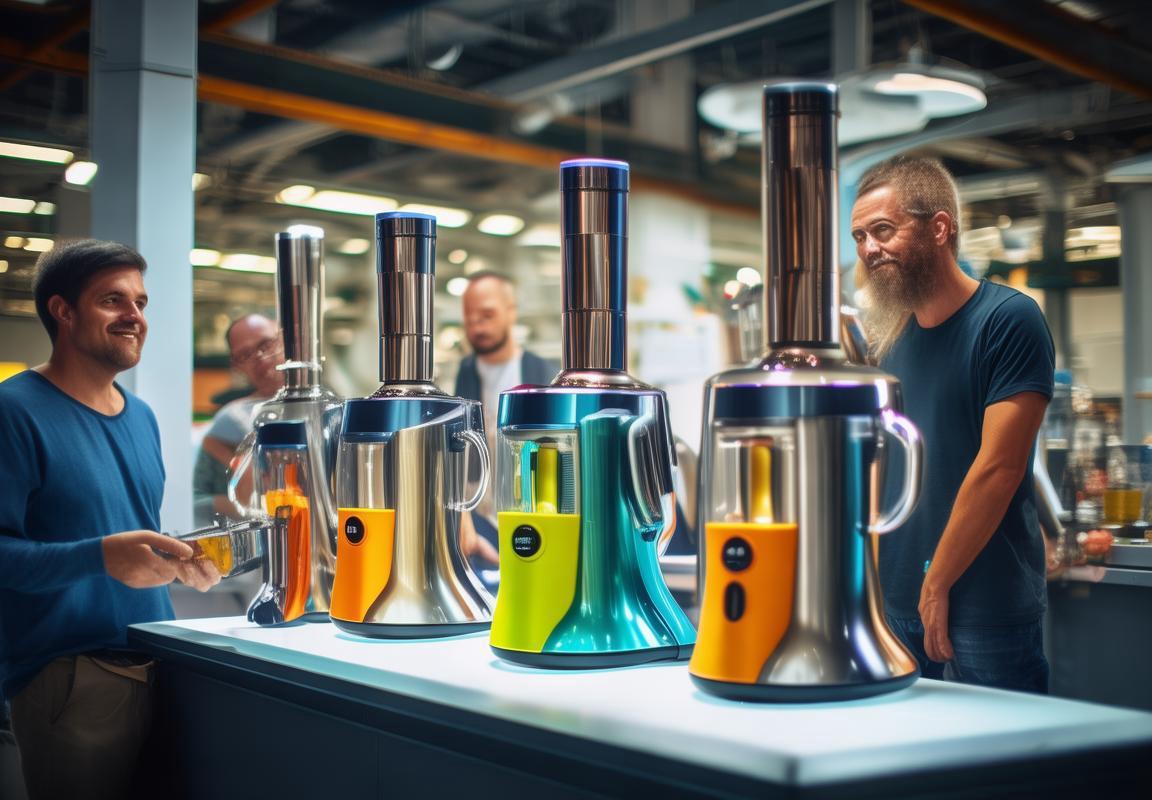
Conclusion: The Impact of ODM on the Competitive Landscape of Kitchen Appliances
The competitive landscape of kitchen appliances has been dramatically reshaped by the integration of Original Design Manufacturing (ODM) services. This partnership model has become a cornerstone for brands seeking to innovate and meet consumer demands without the burden of developing products in-house. Here’s how ODM has made its mark and continues to influence the industry.
In the pursuit of differentiation, brands often find themselves at a crossroads: invest heavily in research and development, or collaborate with external design teams to bring new ideas to life. ODM offers a middle ground, allowing companies to harness the creativity of specialized design firms while maintaining control over their product’s identity and brand image.
One of the most significant impacts of ODM on the kitchen appliance sector is the acceleration of product innovation. By partnering with ODM firms, brands can quickly iterate on designs, experimenting with materials, features, and user interfaces to create appliances that stand out in a crowded market. This agility enables companies to respond swiftly to emerging trends and consumer preferences.
Moreover, ODM partnerships often lead to cost savings. Designing and manufacturing appliances in-house can be a costly endeavor, especially when considering the need for specialized equipment and skilled labor. By outsourcing these tasks to ODM providers who specialize in kitchen appliances, brands can reduce overhead and production costs, making it more feasible to offer competitive pricing to consumers.
Case in point, a well-known appliance brand turned to an ODM partner to develop a line of smart kitchen gadgets. The ODM firm’s expertise in integrating cutting-edge technology allowed the brand to launch products with advanced features that were both functional and user-friendly, all while keeping the manufacturing costs in check.
The quality control aspect of ODM cannot be overlooked. Many ODM providers are ISO-certified and adhere to stringent quality standards, ensuring that the appliances they produce meet or exceed the brand’s expectations. This not only minimizes the risk of defective products reaching the market but also enhances the brand’s reputation for reliability and durability.
On the marketing front, ODM can be a game-changer. By collaborating with design firms that understand the nuances of product marketing, brands can create appliances that are not only aesthetically pleasing but also resonate with their target audience. The design of a juicer, for example, can be tailored to appeal to health-conscious consumers, with sleek lines and a modern aesthetic that suggests efficiency and freshness.
As the market evolves, there are challenges that come with the territory of ODM. One such challenge is maintaining a balance between innovation and cost-effectiveness. Brands must ensure that their ODM partners are not compromising on design for the sake of cutting corners. Transparency and clear communication are crucial in this regard.
Another challenge is the need for brands to stay abreast of evolving regulations and standards, especially in the kitchen appliance sector. Compliance with safety and environmental regulations is paramount, and ODM partners must be adept at navigating these complexities to ensure that the products they deliver are not only attractive but also compliant.
Looking ahead, the impact of ODM on the competitive landscape of kitchen appliances is expected to grow. As consumers demand more personalized and efficient appliances, the ability to offer customized solutions through ODM will become increasingly valuable. This could lead to a more fragmented market, with niche players emerging alongside established brands.
The rise of e-commerce also plays a role in shaping the future of ODM. Online marketplaces provide a platform for new brands to enter the market, and ODM can be a gateway for these startups to offer innovative products that appeal to a global audience without the need for extensive infrastructure.
In conclusion, ODM has become an indispensable tool for brands looking to thrive in the dynamic kitchen appliance sector. It offers a pathway to innovation, cost savings, and enhanced marketability. As the industry continues to evolve, the role of ODM will likely become even more pronounced, driving the creation of appliances that not only meet but exceed consumer expectations.